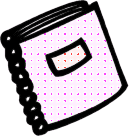In today's digital age, it's easy to assume that taking class notes is no longer necessary. After all, we have access to all kinds of information at our fingertips, right? Well, not exactly.
Why Class notes are an essential tool?
They help you to remember important information and clarify the concepts discussed in class. Taking notes allows you to actively engage in the class and retain information more effectively. When you take notes, you are processing information, analyzing it, and then writing it down in your own words. This helps you to remember the information better as it is no longer just a passive experience of listening to the teacher but an active one of engaging with the material.
Here are some tips!!
Be attentive and engaged:
The first step to making effective class notes is to be attentive and engaged during class. Pay attention to what the professor is saying, and actively participate in discussions. Engage with the material and try to connect it with your personal experiences or previous knowledge.
 |
| Honoré de Balzac, manuscript page Illusions perdues, 1837-1843 |
Avoid copying the lecture verbatim, as it may hinder your understanding of the material. instead, have you ever considered taking English class notes through sketches and graffiti? Not only can it be a fun and creative way to engage with the material, but studies have shown that visual note-taking can also improve memory retention. You can visit notes of famous authors or persons. They are truly a treasure hunt. Give it a try and see how it works for you!
Organize your notes:
Organize your notes in a logical and easy-to-understand manner. Use headings, subheadings, and bullet points to separate different topics and concepts. This will make it easier to review your notes later and help you to remember the main points.
Include examples:
Include examples from the lecture or your own research in your notes. This will help you to understand the concepts better and make it easier to recall them later. It will also demonstrate your understanding of the material when it comes time to review your notes for exams.
Review and revise:
Review your notes regularly and revise them if necessary. This will help you to retain the information better and clarify any misunderstandings. You can also add additional notes or comments as you continue to engage with the material.
We as a teacher strongly believe that class notes are an essential tool for every student in an English literature class. They facilitate active learning, serve as a reference point for studying, and can be a personal record of your progress. It requires attentiveness, organization, and active engagement with the material. By following these tips, you can create comprehensive notes that will help you to succeed in your studies. Remember to review and revise your notes regularly to ensure that you retain the information and deepen your understanding of the material. So, make sure to bring your notebooks and pens to every class and take good notes!
References
1. NDLI Presents: Rabindranath Tagore (1961). (n.d.). NDLI: Rabindranath Tagore (1961). https://www.ndl.gov.in/document/a0lkb096MkdYNGcyb0pzOXlianJTQVh2aWxKU2I2MnMrejdFc3VIWW5SRT0
2. 53 Notebooks of famous people ideas | sketch book, commonplace book, writing. (n.d.). Pinterest. https://www.pinterest.com/tompayton102/notebooks-of-famous-people/
3. A. (2014, July 30). #WordWeek: The Famous & their Notebooks. AnOther. https://www.anothermag.com/art-photography/3786/wordweek-the-famous-their-notebooks



Comments
Post a Comment
Drop any query, suggestion or comment here.